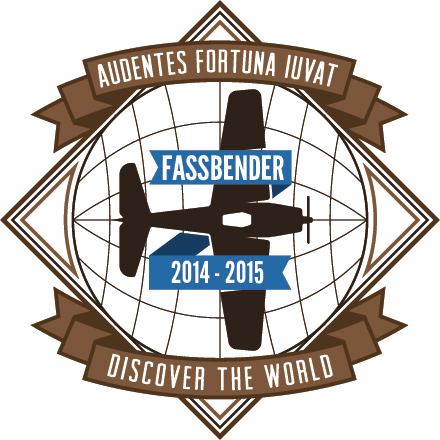Attractions Along a lengthy and Desolate Road
Bullets, Drugs, and Corn
Although South Dakota is only 383 miles wide, we spent a disproportionate amount of time traveling through the state on our way towards Minnesota and further points east. After the Black Hills and Mount Rushmore, the majority of South Dakota is largely flat, resulting in a boring drive straight across Interstate 90. However, a number of places have sprung up along this route, offering welcome respite for road-weary travelers—and offering them an opportunity to part with their money.
Deadwood
I've long been interested in visiting the frontier town of Deadwood, South Dakota. Since it's located only about an hour from Mount Rushmore, after a morning visit with the graven images of four presidents, we took a short drive to see the sights offered by this small town that once embodied the spirit of the wild west.
Deadwood started as an illegal (the land was owned by the Lakota nation) gold mining town around 1876. In its day, it was notorious as a den of vice and lawlessness, but it's probably most famous for being the place where Wild Bill Hickok was killed while playing poker at Nuttal & Mann's No. 10 Saloon on August 2, 1876.
In 1879, a good portion of the town burned down. This disaster was followed by a flood in 1883 and another fire in 1894. Although the homes and businesses were rebuilt each time, the records of a late 19th century illegal town tended to be a bit sketchy, and no one is exactly sure where anything was. This means that most of the historic places people can visit today aren't necessarily where they were in back in 1876.
This uncertainty doesn't prevent people from making bold claims of authenticity, however. For instance, the obviously named Wild Bill Bar, located in the spot generally agreed to be where the No. 10 Saloon once stood, is marked by a sign hanging over the street.
As I stopped to photograph the sign, a gentleman burst out of the door, announcing that this was, in fact, the true location of the original No. 10 Saloon where Wild Bill was shot—despite any claims to the contrary made by other local establishments. He invited us inside to take a look. Being the personable persons we are, we took him up on the offer.
The place was filled with all sorts of wild west memorabilia as well as plenty of tourist trinkets for sale. They also had a basement room set up to look like the No. 10 Saloon of 1876, and you could get a closer look if you bought a beer (for $13) or paid for a ticket (I can't remember the price of the drinkless ticket). We passed on this and, after checking out the adjacent old-fashioned candy shop, headed out to visit Wild Bill's gravesite.
The Mount Moriah cemetery is up the hill from Deadwood's main street and, for a modest $2.00 entry fee, you can pay a visit to the graves of the town's early luminaries, like Wild Bill Hickock, Calamity Jane, and Seth Bullock. Wild Bill's grave site was easy to find because it was marked by a large bronze monument.
It's an oddly placed monument, and to get a good view of it, you sort of have to angle yourself over other nearby graves. Naturally, people reach between the iron bars to adorn Wild Bill's grave with homages to his legend, including playing cards showing off his fabled last hand—black aces and eights, commonly known in poker parlance ad Dead Man's Hand.
Despite all the adoration, this isn't the original burial site of Wild Bill—he was first buried in a plot in Ingleside Cemetery. In 1879, Wild Bill's body was exhumed and relocated here because the town was growing and needed the ground occupied by Ingleside for housing.
Art Alley
When we visited Melbourne, Australia, we enjoyed walking through the many alleys decorated by aspiring street artists. So, naturally, had to visit Art Alley, a short block-long stretch of street sort of hidden between 6th and 7th Streets in downtown Rapid City.
Street art in Rapid City is not quite as accepted as it was in Melbourne, though. In Rapid City, artists need a permit to paint on the walls. Also unlike Melbourne, the site seems to attract less-artistic graffiti spray painted over some of the murals, and some business along the alley don't seem to like the idea of being a canvas for street art. Still, it's a pretty interesting spot to visit.
The neighborhood around Art Alley also had bronze statues of many past presidents and other public art sculptures displayed on each corner, which were all very cool to see.
Art Alley is also near the Firehouse Brewing Company. I was hoping to purchase a bottle of some local beer I could enjoy after completing a long drive across the flatness of South Dakota, but Rapid City didn't allow for the brewery to sell bottles of beer to consumers.
Wall Drug
As far back as Wyoming, roadside signs, very much in the model of the Burma-Shave signs, beckoned us to stop at Wall Drug with offers of free ice water, 5¢ cups of coffee, promises of delicious food, and other entertaining distractions for the bored traveler.
When I was young, it seemed like every car had a "Have You Dug Wall Drug" bumper sticker on it, and many of my friends and classmates had visited the place. When my family took a trip to Mount Rushmore in 1977, I really wanted to stop at Wall Drug, but my dad said there was no way he was stopping at that tourist trap. No amount of pleading from me and my brother could persuade him to change his mind.
But, now that I'm the dad, I get to make my own poor decisions—and one of those decisions was a stop off at Wall Drug.
What was probably once a humble drug store has turned into a monstrous mass of interconnected shops that has completely swallowed the town of Wall. I couldn't tell you if there were any businesses along Wall's main street that weren't part of Wall Drug.
You can still get your free ice water and a 5¢ cup of coffee, but you can also get all manner of things—from T-shirts and western wear to high-end knives to camping supplies. There are also many animatronic dioramas, including a giant T-Rex that roars every 12 minutes, to entertain the kids.
I'm glad we stopped off here. My curiosity has been satisfied, and I never have to return.
Corn Palace
Many years ago, corn palaces were, inexplicably, a big deal. At one time across the Midwest, mainly in South Dakota and Iowa, there were as many as 34 different corn palaces. Today, however, there's only one left in the world—and that's the one at Mitchell, South Dakota.
The Corn Palace is a concert hall, sports arena, and theater. It was first opened in 1892 to celebrate the "Corn Belt Exposition," and every year since then, it's been redecorated with a new theme. The theme for 2016/2017 is "Rock of Ages," and it struck us as a bit odd that 2017 is half over, the Corn Palace Festival (to be held on August 24) is quickly approaching, yet the design for this year's theme is not even half complete.
If you're concerned about the progress of this year's design, just head over to the official Corn Cam to see how it's coming along.
Decorating the Corn Palace costs upward of $130,000 to $150,000 (we found conflicting data in the Palace on this), and the designs incorporate 12 different colors of corn and uses each part of the plant—cobs, leaves, and even the silks—in the decorating process. The ears of corn are split lengthwise and nailed to a plywood backing. Then those half-ears are coated with some sort of varnish or shellac to keep the birds from eating the palace.
Back in 1977, I visited this place with my family, and it's changed a lot since then. There was a fire in 1979 that destroyed some of the palaces famous minarets, and today the minarets are fewer in number and made of metal instead of corn. I found this oddly disappointing.
Inside, the corn palace smells like popcorn. There's a movie (we didn't watch) and a number of displays featuring the history of corn agriculture and the Corn Palace itself, but little else noteworthy. We did learn one rather interesting factoid from these displays—in 1925 the plans for Mount Rushmore were revealed at the Corn Palace Festival (or whatever it was called back then).
The Corn Palace opens at 8:00 a.m. We had a big day of driving ahead of us (our target destination was western Wisconsin), so we visited early in the morning. We're glad we did, because we arrived just before the parade celebrating the annual Corn Palace Stampede Rodeo (the "best rodeo in the world," according to one resident). By the time we left, many of the streets were closed off and parking was very hard to come by.
When we were done with our visit to the Corn Palace, we grabbed a quick snack and hit the road before the parade kicked off. Soon enough, we were back on Interstate 90 heading east, leaving the tourist traps of South Dakota behind.
Thank you to our friends at JUCY for providing us a discount to make our journey possible. All opinions are our own.


Tom Fassbender is a writer of things with a strong adventurous streak. He also drinks coffee.












